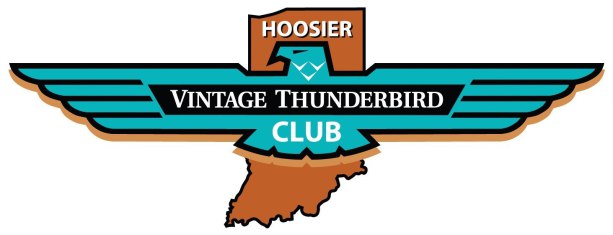
1st Generation
Adobe Acrobat document [58.7 KB]
The first full winter collection created by our fashion house will be
launched early next month. Stay tuned for more updates. As most of us
know, the early Bird was the brainstorm of Ford Division general manager
Lewis D. Crusoe, who went to Paris one year for the auto show and left
determined to have a Ford answer to the Picasso, the revival Bugatti, the
XJ Jaguar, or anyway the General Motors Lesabre.
Crusoe was accompanied to Paris by designer George Walker. When
Crusoe asked why Ford didn’t have a swoopy two seater, Walker candidly
replied an “Oh, but we do”, grabbed the nearest phone and told his people
back in Dearborn to “get on the stick”. The rest is history.
The first two-seater came off the line on Sept. 9th, 1954, and
received wide acclaimed with Ford’s new 292 CID, 193 bhp V8 and
automatic, it had plenty of zip to go and good looks. The 292 was only
available in 55 Thunderbirds and full sized Fords used for police work.
I wonder how many club members know who took delivery of the first
Thunderbird ever sold. It was Tom Mc Cahill, the famous auto tester from
Mechanic Illustrated. He paid full retail price for the little Bird in the late
summer of 1954. His T-Bird became sports- car-speed-trial champion at
Daytona Beach in February of 1955. In stock form, his T-Bird hit 60 in 9.5
seconds and hit 112 mph. Not satisfied with its performance, he had the
engine balanced, ports polished, and a station wagon axle ratio of 3:54-1
installed according to my Hollander Exchange Manual. The transmission
was a 3 speed with overdrive. Performance from 0-60 dropped to 6.1
seconds and top speed on the beach with ideal conditions went to 127
m.p.h... This was enough to sweep all the old XJ 120 Jags and Porsches to
claim the win. The old Ford Y-Block produced from 1954-62 was no slouch,
if set up right.
Another tip from my memory; whenever rebuilding an early Y-Block,
use the camshaft from a 1957 312 engine. These cams have a machined
groove around the circumference of the cam bearings for improved top end
oil flow to the rockers and valves, an ailment on Y-Blocks that were not
maintained with scheduled oil changes. Always check valve lift and piston
clearance when swapping camshafts.
The baby birds of 55-57 were glamorous today as yesteryear. They
were a personal car as described by Ford and drew people to the
showrooms to look at other Ford products. It was not a family car or
practical car for 6 footers, such as myself. Club member, Bud Gibson, had
a 57 T-Bird for a short time. With the top on, I had to stretch in an awkward
way to enter the car. A problem, I don’t have with my 58 T-Bird.
As with any new model, the 55 T-Bird presented the most problems.
The six volt electrical system occasionally produced hard starting,
especially in the colder climates, the early Holley 4 Barrel carburetor,
nicknamed the Teapot, Flamethrower, etc. tended to flood or catch on fire.
This was rectified with a Ford built 4100, 4 barrel carburetor for 1957. Door
latches caused problems, and replacements are costly. This was rectified in
1956 with redesigned door latches, part of Ford’s safety campaign. T-Birds
of this series also tend to overheat, caused by a combination of high power,
small radiator, and small water pumps. Owners often fit thicker radiator
cores.
As a body repairman, this series of T-Bird are a nightmare to repair in
a front end collision, all front fenders, and the front cowl are welded on and
leaded. Clearances and fit must be checked and rechecked. After welding
and leading, one’s bodywork will be clearly seen.
All and all, this series of T-Bird has beautiful body lines thanks to
stylist Frank Hershey. My personal favorite is the 57 with its beautiful lines,
selection of engines, and interior appointments, and the most refined of the
series. The 55 T-Bird would be my second choice because of the clean
lines without the continental kit. The 56 had many refinements, including
the 12 volt electrical system. However, the frame had to be strengthen to
accommodate the continental kit. It doesn’t handle as well as a 55 or 57.
Then is now the 55-57 T-Bird has become an instant collectible. It is
not a practical car for families or 6’4” people. Ford’s newly conservative
general manager wanted a more practical T-Bird with more sales. This is
our next article with the 58-60 T-Birds.
Happy holidays to all!
Respectively Submitted, Larry L. Sneary
Bibliography (Robinson, 1979-80) Bibliography Langworth, R. M. (1985).
Post War Cars A Flight in an Early Bird. Car Collector and Car Classics,
8-9. McBride, J. W. (1990). T-Bird: It was a Sports Car with High-Heeled
Sneakers. Classic Auto Restorer, 22. McCahill, T. (1969). MI Tests the 69
Thunderbird. Mechanic Illustrated, 53-54. Robinson, E. (1979-80). And I
Never Want Another 55 T-Bird. The Best of Old Cars Weekly, 25.55-57 TBird
Overview

